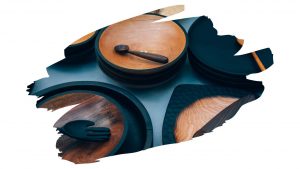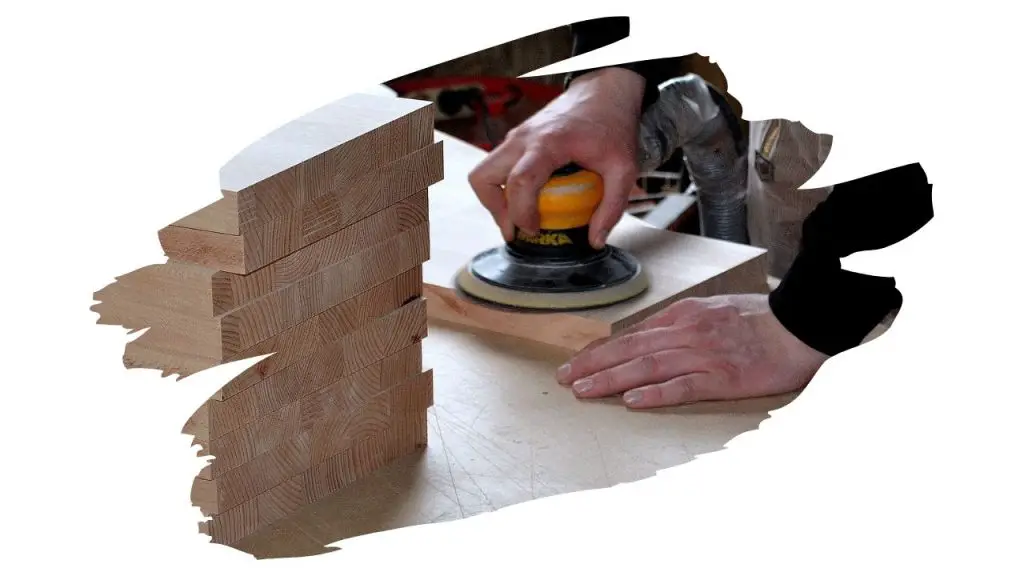A woodwork project isn’t done until you give it a finish.
So treating the wood with a quality polyurethane or varnish coat is essential if you want to give your newly made craft a rich color whilst also protecting it from damp and dirt.
There are a multitude of oils you could use for wood finishing. However, one of the most popular protective finish liquids on sale is Danish Oil.
The advantages of using Danish oil as a wood finish run a plenty. For example;
- It drys faster than most other finish oils (typically in under 6 hours)
- Its non-toxic, so it can be used on most wood household furniture
- Its waterproof, but not overly slippery to the touch once dry.
There are, however, a few disadvantages to applying a Danish oil finish in that;
- Its soft film coat isn’t very durable.
- A Danish oil treatment will need more maintenance due to scratches and marks.
- And, because Danish oil isn’t very scratch resistant, it doesn’t hold up well against everyday wear and tear.
Still not sure if Danish Oil is the right treatment for the job at hand? Well keep reading as we walk you through all of the benefits of Danish oil and how best to use it.

This post may contain affiliate links to products that we receive a commission for (at no additional cost to you). Learn more here.
So just what is Danish oil actually good for?
To put it simply, using this tung oil variant on wood surfaces gives it a dark rich finish that is incredibly water resistant.
You wouldn’t want to use it on a table surface (due to possible scrapes marking the satin coat), but it is perfect for handles on cutlery.
Applied to a bare wood such as pine or maple, it will darken the wood after a good coat. However, how dark the wood gets will depend what color danish oil you use.
You can get Danish Oil in a range of colors from Golden Oak to Black Walnut, but what will really determine the final color of your work piece will be the type of wood you are treating.
Can I Use A Danish Oil Finish On Oak and Pine?
Yes! Danish oil is often used on softwoods such as oak and pine.
That is because it helps to bring out the vibrancy of their timber by deepening their already rich rustic color.
What is the best brand of Danish oil?
There are so many different brands of Danish oil on the market, but the most popular (and reliable) brands are Watco, Deft and Briwax Danish Oil. Although Watco is by far the most popular brand among them.
Click here to get Watco’s Danish Oil Wood Finish (in a wide range of colors) over on Amazon.
What is the best way to apply Danish oil?
Well, first things first, you need to prepare the surface of the wood you plan on treating.
That means sanding it down where needed and making it smooth.
Once thats done, remove all and any left over saw dust from the surface.
Set up your work piece somewhere that is room temperature, well ventilated and free of dirt and dust.
Use a quality wood finishing brush apply a thick first coating across the entire surface of the wood.
Once done, leave it to dry for 30-45 minutes before returning to apply another coating on the work piece.
It is worth noting that one coat of Danish oil is not enough.
You’ll want to apply at least 3 coats to the wood, with each coat adding an extra layer of moisture protection onto the furniture.
Once you’ve finished coating, you can leave the oil finish to dry (it’ll take around 6 hours, but leave it overnight anyway).
Related Post: This Is Why You Don’t Use Danish Oil On Poplar Wood (Revealed!)
Should I sand between coats of Danish oil?

Yes, you will want to apply what is called a ‘Wet Sand’ between each coat.
This will help to get rid of any scratches or pores left on the surface.
A wet-sand is the simple process of using water and sandpaper – or some other mild abrasive material – to smooth down the surface of treated wood.
This is done by moving the sandpaper across the piece in small careful circles.
Its a bit of a challenge to explain the process without a visual guide, so I suggest you give the short video below a play to see how it is done:
Danish Oil Treatments (After Care)
So you’ve treated your project with a few good coats of a fine quality finish. So whats next? Here are a few things you might want to consider;
Can You Varnish Over Danish Oil?
In a word, yes. In a long sentence, any oil based varnish will play nice with Danish Oil and won’t ruin the quality of the finish.
Should I Wax The Wood After Using Danish Oil?
Hmm, this is a bit of a thinker. A good finishing job probably doesn’t need a coat of wax to give it that extra sheen.
But a light wax coat is a great way to give your wood craft an extra bit of gloss, so have at it.
Want to learn more about the pros and cons of a Wood Wax finish? Click here to read my article: 7 Surprising Advantages (And 6 Disadvantages) Of Wax Finishes On Wood
Help! I’ve Changed My Mind! How Do I Remove Danish Oil?
So the shiny finish just doesn’t look right, and you want to turn back time and undo the mistakes of the past.
Well, in which case, you’ll probably want to start by lightly sanding off as much of the oil finish as you can.
Remember, Danish Oil doesn’t really hold up well against even light scratches, so a sander should be able to take off a fair bit of the 3rd and 4th coatings. Be delicate with this though so that you don’t ruin the woodwork underneath.
Next, use a good thinning solvent – which you can get at most any hardware store – and give the work piece a thorough wipe down with it.
NOTE: Make sure that your woodwork shop is well ventilated BEFORE applying any solvents.
At this stage its worth noting that by removing the Danish Oil finish you aren’t going to be able to remove all traces of it from the wood, since – like any good finish – the oil would have soaked right into the wood.
But by removing as much of it as you can, you should be able to reapply a new finishing coat or varnish over the old one.
To see the process of quickly stripping down a wood finish, have a look at the video below:
Final Thoughts
Whether you’re a fan of Danish Oil or not, its clear that there are both positives and negatives to using it as a finishing treatment on your woodworking projects.
But, we over here at The Woodwork Place view Danish oil as the triple threat of wood finishers; its safe to apply, quick to dry, and easy on the eye.


![What’s With All That Sticky Residue Left Behind After Paint Stripping? [Explained!] sticky residue after paint stripping](https://www.thewoodworkplace.com/wp-content/uploads/2022/09/Banner-449-150x150.jpg)
